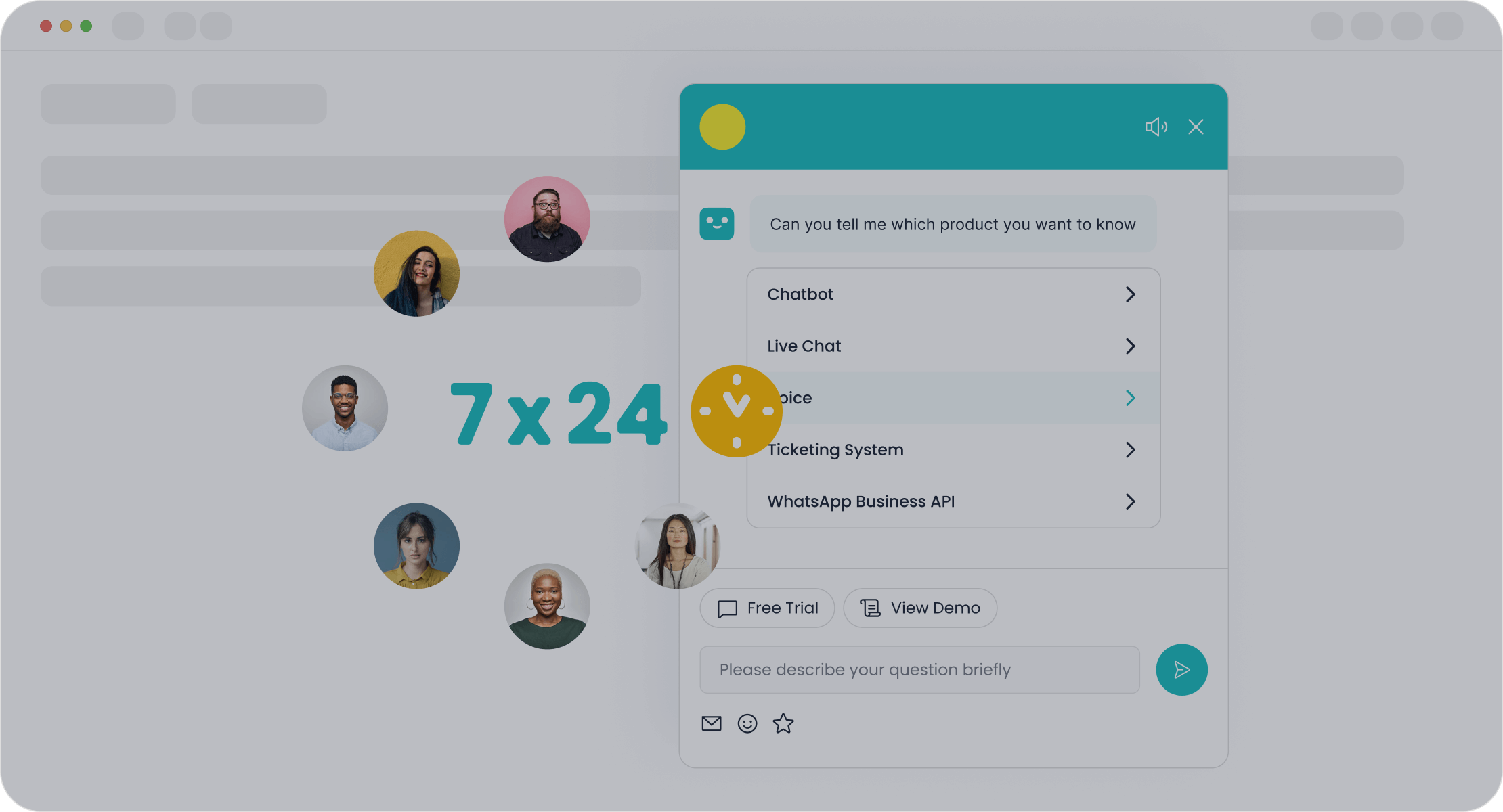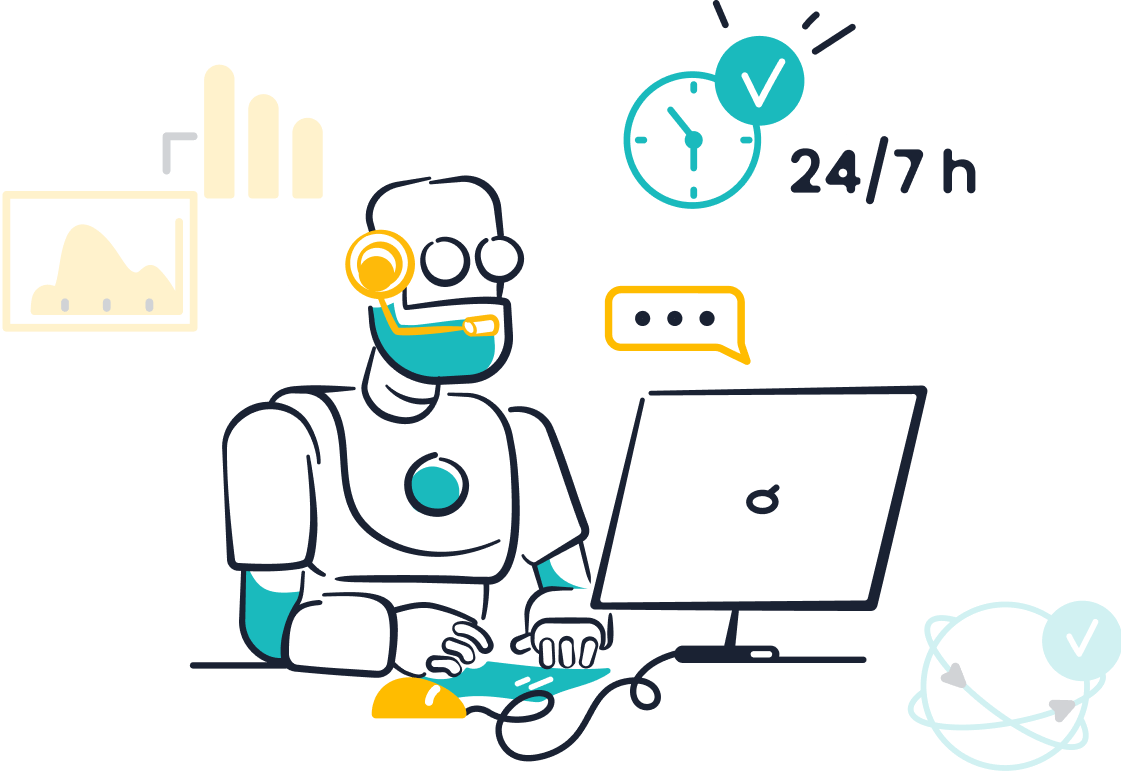Proactive Customer Support Explained with Key Benefits

Proactive customer support anticipates your needs and resolves issues before they arise. Unlike reactive approaches, it focuses on delivering solutions early, ensuring a seamless experience. This strategy significantly impacts customer satisfaction and loyalty. For instance:
- 93% of customers prefer companies offering positive service experiences.
- 86% believe exceptional service turns one-time buyers into loyal customers.
- Businesses using AI for customer service report a 20% rise in satisfaction.

Sobot, with its AI-powered tools like chatbots, exemplifies how proactive support enhances operational efficiency while building trust.
What Is Proactive Customer Support?

Definition and Core Principles
Proactive customer support is a forward-thinking approach where you anticipate and address customer needs before they become issues. Unlike traditional reactive methods, this strategy focuses on preventing problems and enhancing experiences. For example, sending reminders for subscription renewals or notifying customers about service updates demonstrates proactive care.
The core principles of proactive customer service include:
- Anticipation: Predicting customer needs using data and analytics.
- Prevention: Resolving potential issues before they escalate.
- Engagement: Building trust through timely and personalized communication.
A Gartner study highlights that proactive engagement can boost customer satisfaction by 20%. Companies like Amazon and Spotify excel in this area by offering tailored recommendations and notifications, fostering loyalty and repeat business.
How Proactive Customer Support Differs from Reactive Support
Proactive customer service takes the initiative, while reactive support waits for customers to report issues. This distinction lies in their approach, orientation, and outcomes. The table below illustrates these differences:
| Characteristic | Proactive Customer Support Behavior (PCSB) | Reactive Support |
|---|---|---|
| Approach | Self-initiated and anticipatory actions | Responding to customer requests |
| Orientation | Active and forward-thinking | Passive and reactive |
| Responsibility | Proactively assumes responsibility | Responds to issues as they arise |
| Performance Metrics | Linked to improved customer service | Often measured by response times |
Proactive strategies not only enhance customer satisfaction but also reduce service costs by up to 25%. In contrast, reactive methods often result in higher workloads and delayed resolutions.
Examples of Proactive Customer Support in Action
Proactive customer service manifests in various ways across industries. Here are some examples:
- Automated Notifications: Airlines like Delta Air Lines send real-time updates about flight changes, improving satisfaction by 15%.
- Personalized Recommendations: Retailers use purchase history to suggest products, increasing average order value.
- Warranty Reminders: Companies notify customers about warranty expirations, ensuring timely renewals.
Sobot’s AI-powered chatbot exemplifies proactive support by autonomously handling routine queries and sending proactive push messages. This tool not only enhances efficiency but also boosts conversions by 20%. For instance, Agilent achieved a sixfold increase in service efficiency by integrating Sobot’s omnichannel solution, which proactively addressed customer inquiries.
Why Proactive Customer Support Matters for Customer Retention
The Role of Proactive Customer Service in Building Loyalty
Proactive customer service plays a vital role in fostering customer loyalty. When you anticipate needs and address concerns before they arise, you create a seamless experience that builds trust. For example, 87% of customers value personalized experiences, and 82% are willing to share personal data for better service. These statistics highlight how proactive strategies, like sending tailored recommendations or reminders, can strengthen relationships.
By using tools like Sobot’s AI-powered chatbot, you can deliver personalized interactions at scale. The chatbot’s ability to provide 24/7 support ensures your customers feel valued and cared for, even outside business hours. This proactive approach not only enhances satisfaction but also encourages repeat business, turning one-time buyers into loyal advocates.
How Proactive Support Enhances Customer Retention Rates
Proactive support directly impacts customer retention by addressing issues before they escalate. Studies show that 67% of customer churn could be avoided if problems were resolved during the first engagement. Additionally, 91% of unhappy customers leave without complaining, making proactive outreach essential for identifying and resolving hidden dissatisfaction.
For instance, Copa Airlines reduced its support agents’ case volume by 40% through proactive notifications, while Anglian Water achieved significant savings in call center costs. These examples demonstrate how proactive strategies improve retention by reducing friction and ensuring a positive experience. Sobot’s omnichannel solution, which integrates AI-driven automation, helps you achieve similar results by streamlining interactions across platforms.
The Impact on Brand Reputation and Trust
Proactive customer service enhances your brand reputation by showing that you prioritize customer needs. Research reveals that 81% of consumers need to trust a brand before making a purchase, and 86% care about authenticity when choosing who to support. Transparent communication and proactive engagement give your customers peace of mind, aligning your brand with their values.
Satisfied customers are more likely to recommend your business, with 90% trusting brands endorsed by friends. Sobot’s solutions, like its omnichannel platform, help you maintain this trust by delivering consistent, high-quality service. By proactively addressing concerns, you not only retain customers but also inspire confidence, setting your brand apart from competitors.
Key Benefits of Proactive Customer Support

Reduces Customer Effort and Frustration
Proactive customer service minimizes the effort customers need to resolve issues. By addressing potential problems before they arise, you save your customers from the frustration of contacting support. For example, sending reminders about subscription renewals or notifying customers about service outages ensures they stay informed and prepared. This approach creates a smoother customer experience and builds trust.

A study shows that 73% of customers who receive proactive communication report a positive experience. Tools like Sobot’s AI-powered chatbot make this possible by automating routine updates and providing instant responses. The chatbot’s ability to operate 24/7 ensures your customers always have access to the information they need, reducing their dependency on live agents.
Decreases Support Volume and Costs
Proactive strategies significantly reduce the volume of support tickets. By resolving common issues in advance, you allow your team to focus on more complex inquiries. For instance, a tech company issuing a firmware update to fix a common bug can prevent a flood of customer complaints. This not only saves time but also cuts operational costs.
Self-service chatbots, like Sobot’s AI chatbot, are projected to save companies $11 billion by 2023. These tools handle repetitive queries, freeing up resources and improving efficiency. Proactive issue resolution also prevents costly escalations, positively impacting your bottom line. With streamlined operations, your business can achieve higher productivity and better resource allocation.
Builds Long-Term Customer Loyalty
Proactive customer service fosters loyalty by showing customers you care about their needs. When you anticipate their concerns and provide timely solutions, you create memorable experiences. This strengthens their connection to your brand and encourages repeat business. Research indicates that proactive engagement improves customer retention rates and enhances customer lifetime value.
Satisfied customers often become brand advocates. They recommend your business to others, boosting your reputation and expanding your reach. Sobot’s omnichannel solution supports this by delivering consistent, high-quality service across platforms. By proactively addressing concerns, you not only retain customers but also inspire them to champion your brand.
Provides Actionable Insights for Continuous Improvement
Proactive customer support not only resolves issues but also helps you gather valuable insights to improve your services. By actively analyzing customer feedback, you can identify trends and make data-driven decisions that enhance the overall experience. For example, monitoring customer experience metrics like satisfaction scores or response times allows you to pinpoint areas needing improvement. This approach ensures your services evolve to meet customer expectations.
Creating a robust feedback loop is essential for continuous improvement. When you regularly collect and analyze feedback, you can implement targeted enhancements that address recurring issues. Companies like Amazon excel in this area by leveraging data analytics to understand customer behavior. They use these insights to resolve potential problems before they arise, ensuring a seamless experience.
Here’s how actionable insights contribute to better customer service:
- They help you understand customer needs and preferences.
- They enable you to identify and address potential issues early.
- They provide a foundation for making informed, strategic decisions.
Sobot’s omnichannel solution empowers you to gather and analyze customer data across platforms. This unified approach ensures you have a comprehensive view of customer interactions, enabling proactive improvements. By leveraging these insights, you can continuously refine your strategies and deliver exceptional service.
Enhances Operational Efficiency with Tools Like Sobot Chatbot
Operational efficiency is a cornerstone of successful customer support. Tools like Sobot Chatbot streamline processes, allowing you to handle inquiries faster and more effectively. The chatbot operates 24/7, autonomously resolving routine queries and reducing the workload on your support team. This proactive approach minimizes response times and ensures customers receive timely assistance.

The impact of Sobot Chatbot on operational efficiency is evident in its performance metrics:
| Metric | Value |
|---|---|
| Reduction in inbound discussion volume | 20% |
| Positive feedback rate | 96%+ |
| Correct answers rate | 80% |
| Customer satisfaction score (CSAT) | 97% |
| Problem resolution rate | 85% |
| Customer happiness rate | 99% |
| Sign-off rate | 35% increase |
| COD collection rate | 40% increase |

These results demonstrate how Sobot Chatbot enhances productivity while maintaining high customer satisfaction. By automating repetitive tasks, the chatbot allows your team to focus on complex issues, improving overall service quality. This proactive solution not only reduces costs but also ensures your operations run smoothly, giving you a competitive edge.
How to Implement Proactive Customer Support Effectively
Leverage Data and Analytics to Anticipate Needs
Data and analytics are essential for understanding your customers and predicting their needs. By analyzing historical data, you can identify patterns and trends that help you anticipate potential issues. For example, predictive analytics can reveal which customers are likely to churn, enabling you to take proactive measures to retain them.

Using tools like Sobot’s omnichannel solution, you can gather and analyze customer data from multiple platforms. This unified approach allows you to deliver personalized experiences that enhance satisfaction and loyalty. For instance, e-commerce platforms often use predictive models to recommend products based on customer preferences, increasing repeat purchases.
| Benefit | Description |
|---|---|
| Enhanced customer loyalty | Personalized experiences foster stronger relationships. |
| Improved customer lifetime value | Strategies based on data maximize long-term value. |
| Reduced customer churn | Early identification of risks enables proactive retention strategies. |
Grouping customers with similar attributes allows you to predict behavior patterns more effectively. This insight helps you create targeted interventions that improve retention and satisfaction.
Use AI-Powered Tools Like Sobot Chatbot for Predictive Support
AI-powered tools, such as Sobot Chatbot, play a crucial role in delivering predictive customer support. These tools analyze historical data to forecast customer needs and behaviors. For example, the chatbot can identify accounts at risk of churn or suggest products based on likely purchases. This proactive approach ensures customers receive timely and relevant assistance.

Sobot Chatbot excels in automation and real-time engagement. It operates 24/7, autonomously handling routine queries and reducing response times by up to 40%. A healthcare provider using Sobot improved resolution rates by 35%, demonstrating the chatbot’s effectiveness in streamlining workflows. By integrating predictive analytics, the chatbot not only resolves current issues but also prevents future ones, enhancing overall customer satisfaction.
Train Teams to Deliver Proactive Customer Service
Your team plays a vital role in implementing proactive customer support. Training programs equip them with the skills needed to anticipate customer needs and provide timely solutions. Certified representatives are better prepared to handle complex situations, meeting customer expectations effectively.
Online training programs offer flexibility and allow managers to focus on strategic improvements. These programs enhance both individual and team performance, leading to better outcomes. For example, well-trained teams can educate customers about your products, reducing inquiries and saving time. This approach improves satisfaction and fosters loyalty.
Providing clear and comprehensive information builds trust and strengthens your brand reputation. Customers with adequate knowledge are less likely to face issues, ensuring a smoother experience.
Communicate Proactively Across Omnichannel Platforms
Proactive communication across omnichannel platforms ensures your customers receive consistent and timely updates, no matter their preferred channel. By integrating platforms like email, SMS, social media, and live chat, you can create a seamless experience that keeps your customers informed and engaged.
For example, response times vary significantly across channels. The table below highlights how proactive communication can improve performance:
| Channel | Below Average | Average | Above Average | Stellar |
|---|---|---|---|---|
| 1 day | 12 - 24 hours | Under 4 hours | Under 1 hour | |
| Social Media | 1 day | 12 - 24 hours | Under 4 hours | Under 15 mins |
| SMS | 1 hour | 10 minutes | Under 5 mins | Under 1 minute |
| Live Chat | 1 hour | 10 minutes | Under 5 mins | Under 1 minute |
These benchmarks demonstrate the importance of fast, proactive communication. Tools like Sobot’s omnichannel solution unify customer interactions across platforms, ensuring you meet these standards. By analyzing metrics such as click-through rates and time spent on pages, you can refine your strategies and deliver personalized experiences.
Integrating data from various sources also helps you understand customer preferences. For instance, you can identify which channels customers use most frequently and tailor your communication accordingly. This approach not only enhances satisfaction but also builds trust, as customers feel valued and understood.
Tip: Use analytics tools to monitor engagement across channels. This data provides actionable insights for improving your omnichannel strategy.
Monitor and Refine Strategies for Better Results
Monitoring and refining your proactive customer support strategies ensures continuous improvement. By analyzing performance metrics, you can identify areas for enhancement and implement targeted solutions.
Many companies have achieved remarkable results through this approach. A tech company reduced its Average Handle Time (AHT) by upgrading support technology and training its team. Similarly, a retail chain improved customer loyalty by addressing pain points identified through Net Promoter Score (NPS) feedback. These examples highlight the value of monitoring key metrics like Customer Satisfaction Score (CSAT) and Customer Effort Score (CES).
Sobot’s solutions simplify this process by providing comprehensive analytics. For example, its omnichannel platform consolidates data from all customer interactions, giving you a clear view of performance. This unified approach helps you pinpoint inefficiencies and optimize your strategies. Whether it’s reducing response times or improving agent training, these refinements lead to better outcomes.
Note: Regularly review your metrics to stay ahead of customer expectations. Small adjustments can have a significant impact on satisfaction and loyalty.
Overcoming Challenges in Proactive Customer Support
Balancing Proactive and Reactive Support Approaches
Balancing proactive and reactive support ensures your customers receive timely and effective assistance. A well-rounded strategy combines the strengths of both approaches. Start by analyzing customer data to identify recurring issues. Use this information to anticipate needs and implement proactive solutions, such as sending notifications or offering self-service options. For example, a subscription service can notify customers about upcoming renewals, reducing last-minute inquiries.
Empowering your support team is equally important. Train them to handle both proactive and reactive scenarios effectively. Encourage them to prioritize high-impact situations that require immediate attention. Regularly analyze support metrics, such as resolution times and satisfaction scores, to evaluate the effectiveness of your strategy. By fine-tuning your approach, you can address customer concerns before they escalate while remaining responsive to unexpected issues.
Avoiding Overcommunication or Intrusiveness
Proactive communication should enhance the customer experience, not overwhelm it. Overcommunication can lead to frustration and reduce trust. To avoid this, focus on delivering relevant and timely updates. For instance, instead of sending multiple reminders about a single issue, consolidate information into one clear message.
Personalization plays a key role here. Use customer behavior data to tailor your communication. A retail business, for example, can send product recommendations based on purchase history rather than generic promotions. Tools like Sobot’s omnichannel solution help you manage communication across platforms, ensuring consistency and relevance. By respecting your customers’ preferences, you can maintain engagement without being intrusive.
Ensuring Scalability with Solutions Like Sobot Omnichannel
As your business grows, scaling proactive support becomes essential. Manual processes may no longer suffice when handling a larger customer base. Scalable solutions, such as Sobot’s omnichannel platform, streamline operations by integrating AI-driven automation. This platform consolidates customer interactions across channels, enabling your team to deliver consistent support efficiently.
For example, Sobot’s AI-powered chatbot operates 24/7, autonomously resolving routine queries. This reduces the workload on your team, allowing them to focus on complex issues. Additionally, the platform’s analytics provide actionable insights, helping you optimize your strategies as your customer base expands. By adopting scalable tools, you can maintain high service standards while accommodating growth.
Proactive customer support anticipates customer needs and resolves issues before they arise. This approach builds trust, enhances customer satisfaction, and reduces operational costs. For example, 87% of U.S. adults prefer proactive contact, while 77% view brands offering proactive service more favorably. Visitors engaging in proactive chat are 6.3 times more likely to make a purchase.
Key Benefits Recap:
- Increased customer satisfaction: Hassle-free experiences encourage repeat purchases.
- Reduced support costs: Early troubleshooting lowers help center requests by up to 30%.
- Boosted customer loyalty: Retaining customers increases profits by up to 95%.
Actionable Steps:
- Anticipate customer needs using data analytics.
- Address issues early with real-time monitoring.
- Leverage AI tools like Sobot Chatbot for predictive support.
Adopting proactive strategies with tools like Sobot Chatbot ensures your customers feel valued, fostering loyalty and long-term success.
FAQ
What is proactive customer support?
Proactive customer support anticipates and resolves issues before they arise. For example, sending reminders about subscription renewals or notifying customers about service updates. Tools like Sobot Chatbot automate these processes, ensuring customers receive timely assistance and reducing the need for reactive support.
How does proactive support improve customer satisfaction?
Proactive support reduces customer effort by addressing issues early. Studies show 73% of customers report positive experiences when companies communicate proactively. Sobot’s omnichannel solution ensures consistent updates across platforms, helping you build trust and enhance satisfaction.
Can small businesses implement proactive customer support?
Yes, small businesses can use tools like Sobot Chatbot to automate routine tasks and send proactive messages. These solutions operate 24/7, saving time and resources while improving customer experiences. Even with limited staff, you can deliver exceptional service.
How does Sobot Chatbot help with proactive support?
Sobot Chatbot uses AI to predict customer needs and send proactive notifications. It operates 24/7, handling routine queries and reducing response times by up to 40%. This ensures your customers receive timely assistance, improving satisfaction and loyalty.
Why is proactive communication important in omnichannel support?
Proactive communication ensures customers receive consistent updates across their preferred channels. For example, Sobot’s omnichannel platform integrates email, SMS, and social media, creating a seamless experience. This approach reduces frustration and builds stronger relationships with your customers.
See Also
Enhance SaaS Assistance Using Effective Live Chat Techniques
Transforming Support with Innovative AI Customer Service Agents
Excelling in Live Chat for Enhanced Customer Service